The Economics and Statistics Division maintains archives of previous publications for accountability purposes, but makes no updates to keep these documents current with the latest data revisions from Statistics Canada. As a result, information in older documents may not be accurate. Please exercise caution when referring to older documents. For the latest information and historical data, please contact the individual listed to the right.
<--- Return to Archive
For additional information relating to this article, please contact:
December 07, 2022GDP BY CENSUS METROPOLITAN AREA, 2019 Statistics Canada has released Gross Domestic Product (GDP) data for Canada's Census Metropolitan Areas (CMAs) and the areas outside of CMAs for 2019. All data are benchmarked to provincial nominal GDP at basic prices.
These results continue to show that just over half (52.3%) of Canada's GDP is generated in six CMAs: Toronto, Montréal, Vancouver, Calgary, Edmonton and Ottawa. GDP and population are similar concentrated in CMAs. In 2019, CMAs accounted for 71.7% of Canada's population and generated 74.0% of Canadian GDP.
In Nova Scotia, Halifax accounted for 45.3% of provincial population and 56.4% of provincial GDP.
In 2019 GDP per capita amongst CMAs was $59,330 and Halifax's GDP per capita was $54,789. The largest GDP per capita among CMAs was found in Calgary, Regina, Toronto, and Ottawa. However, these results may be sensitive to fluctuations in commodity prices. The lowest GDP per capita levels among reported CMAs were observed in Oshawa, Peterborough and Barrie.

Outside CMAs, GDP per capita was $52,848. The highest non-CMA GDP per capita was observed in Alberta at $101,772 (higher GDP per capita than any CMA) while the lowest was reported for non-CMA Nova Scotia ($35,077).
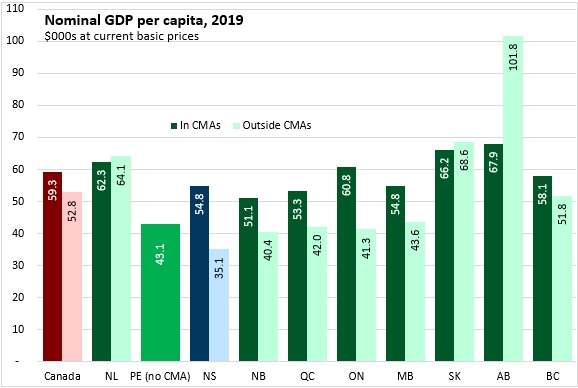
From 2018 to 2019, Nova Scotia's nominal GDP grew by 4.8%. Growth in Halifax was 5.7% while growth outside the city was 3.7%. Across Canada, nominal GDP grew by 3.8% in 2019, with the fastest growth reported in Kitchener-Waterloo-Cambridge and Saguenay. Only Saskatoon, Oshawa, Kingston and Saint John reported contractions in nominal GDP in 2019.
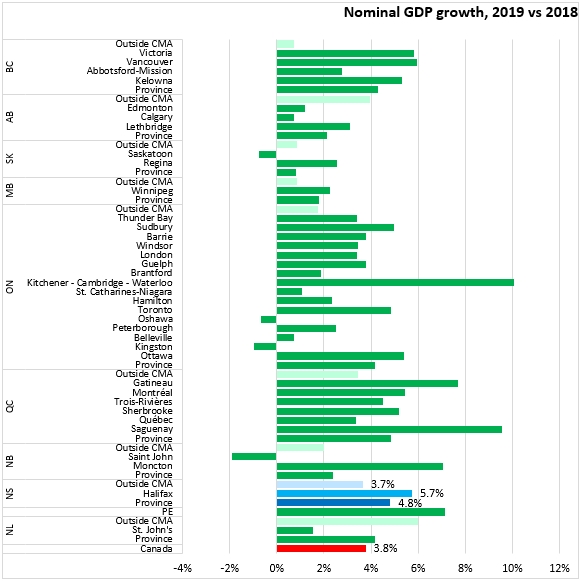
From 2010-2019, GDP growth has averaged 4.0% inside CMAs and 2.8% outside CMAs.
Halifax's GDP grew by an average 3.1% per year over this period, compared to 2.2% in Nova Scotia outside of Halifax. The fastest growing economies over this period were observed in Kelowna and Vancouver. Saint John reported the slowest growth among CMAs over this period. GDP growth outside CMAs was faster in British Columbia and Manitoba while there was slower growth for non-CMA areas in Newfoundland and Labrador.
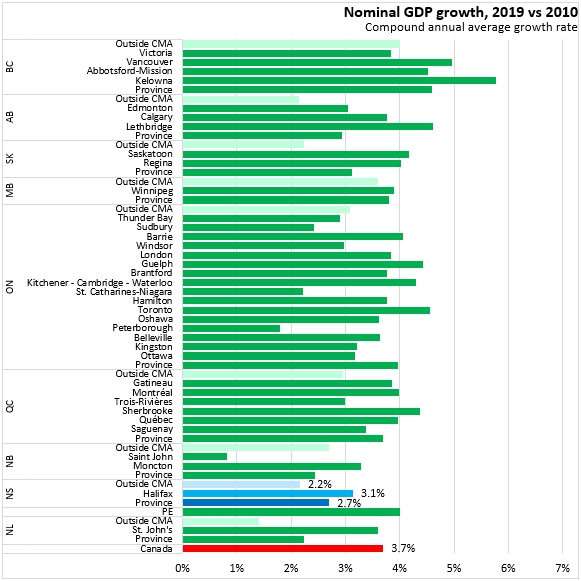
Nova Scotia's nominal GDP in 2018 was $42.7 billion, of which $24.1 billion was generated in Halifax and $18.6 billion was generated outside of Halifax. GDP has been rising in both Halifax and the outside of Halifax.
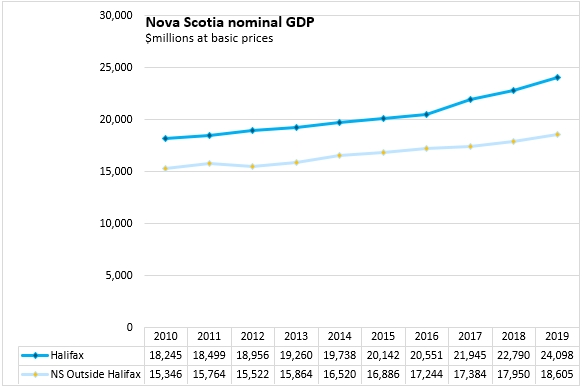
Since 2016, Halifax's nominal GDP growth has outpaced growth in the rest of the province.
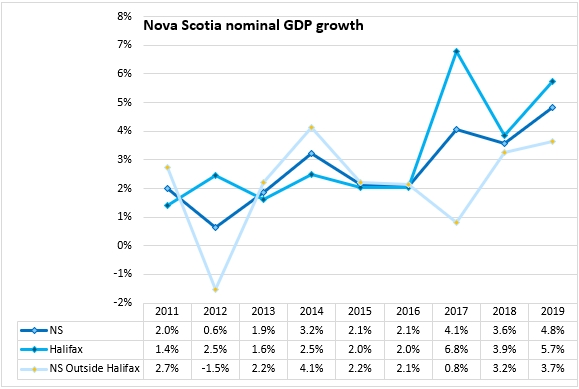
Although Halifax's overall growth in nominal GDP for 2019 was faster than the rest of the province, much of this is attributable to Halifax's faster population increase in this period. On a per capita basis, Halifax's nominal GDP growth in 2019 was similar to that reported in the rest of the province.
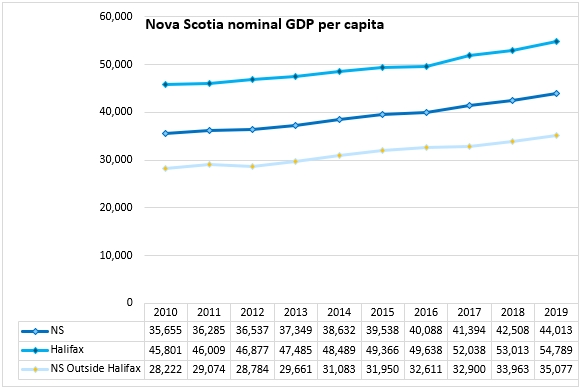
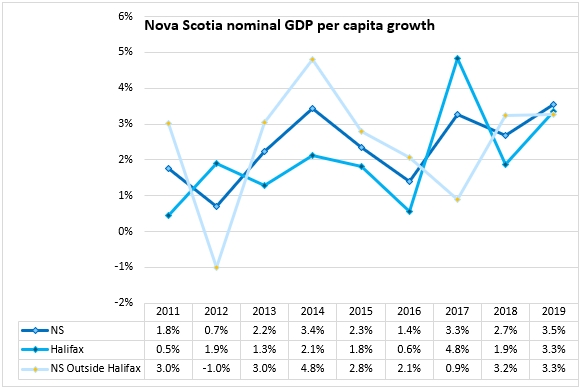
Source: Statistics Canada. Table 36-10-0468-01 Gross domestic product (GDP) at basic prices, by census metropolitan area (CMA) (x 1,000,000); Table 17-10-0135-01 Population estimates, July 1, by census metropolitan area and census agglomeration, 2016 boundaries; Table 17-10-0005-01 Population estimates on July 1st, by age and sex
<--- Return to Archive